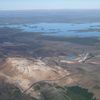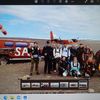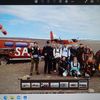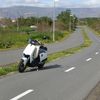23.8.2020 | 09:40
"Allt orkar tvímælis þá gert er."
Bjarni heitinn Benediktsson mælti stundum þessi orð þegar rökrætt var um eða deilt um störf stjórnmálamanna.
Máltækið lýsir ýmsum hliðum og sviðum stjórnmála og þjóðlífs, meðal annars þeirri, að eitt meginatriði lýðræðisins sé að upplýsandi og gagnleg umræða fari fram um störf og aðgerðir stjórnmálamanna.
Rökræðan snýst oft um útfærslur aðgerða frekar en meginatriði, eins og sóttvarnir og takmarkanir á frelsi.
Þá getur notkun talna oft tekið á sig villandi eða umdeilanlega mynd.
Sem dæmi má nefna hrifningu sumra yfir þeirri leið sem Svíar fóru, og er það nefnt sem dæmi að í Svíþjóð séu dauðsföll af völdumm COVID-19 nokkuð færri en í Bretlandi, og það nefnt sem röksemd fyrir því að við hefðum átt að fara leið Svía.
Nær hefði verið að nota samanburðartölur við Ísland, þar sem mikilvægasta talan er sláandi:
Hingað til hafa 27 dáið hér á landi úr COVID-19 á hverja milljón íbúa, en 570 í Svíþjóð.
"Árangur" Svía hefur fram að þessu skilað meira en 20 sinnum hærri dánartíðni en hér á landi, og fórnarkostnaðurinn að þessu leyti sláandi.
Hefðum við viljað sætta okkur við 200 látna úr veikinni hér á landi?
Má segja að fórnarkostnaður Svía felist í meira en 5000 sænskum mannslífum og heildardánartíðni í Svíþjóð er sögð vera meiri það sem af er þessu ári en hún hefur verið á sama hluta árs í 170 ár.

|
Gagnrýnin á fullan rétt á sér |
| Tilkynna um óviðeigandi tengingu við frétt | |








Athugasemdir
Endanleg úrslit í leiknum við þessa veiru liggja ekki fyrir ennþá
en sóttvarnarlæknir Svía gagnrýndi líka harðlega lélegar sóttvarnir á elliheimilum þar í landi í vor
Grímur (IP-tala skráð) 23.8.2020 kl. 11:36
Setja mætti fram þá spurningu hvort sé betra að fórna tugum mannslífa til þess að bjarga þúsundum frá gjaldþroti eða öfugt.
Hver vill svara henni?
Hörður Þormar (IP-tala skráð) 23.8.2020 kl. 13:06
By Wade Sullivan, Cherokee Pilots of the West Coast
Throughout the 1950s, Piper had great success in the low-end airplane market with its PA-20 Pacer and PA-22 Tri-Pacer. Although old-school tube-and-fabric designs, Piper was able to produce them cheaply, and they performed very well compared to their competition.
As early as 1952, however, the need for a more-modern, all-metal airplane to compete with Cessna’s Model 170 had been acknowledged. It was then that Piper officials tried to purchase a four-place Mooney design (that eventually became the Mooney Mark 20), but designer Al Mooney refused to sell.
After considering other designs available at the time, Piper decided to design its own modern airplane. In 1953, aeronautical engineer Fred Weick (NACA cowling, Ercoupe) did a cost study for Piper to find if building an all-aluminum airplane was economically feasible. Weick determined that Piper was spending 8% more to produce the Tri Pacer than Cessna was spending to produce the 170.
Weick had developed a friendship with Pug Piper, son of company president William Piper. Together, in 1956 and early 1957, Weick and Pug Piper established the overall design of a next-generation Piper airplane. It was to be a low-wing all-metal design, with tricycle landing gear, 150-hp Lycoming engine, and a cabin width of 42 inches, roomier than the Tri Pacer, but not as wide as the more-expensive PA-24 Comanche that was just entering production.
In early 1957, Piper contracted with airplane designer John Thorp (T-18, Sky Scooter) to do a preliminary design study of the PA-28. By April, Weick had joined Piper as the director and chief engineer of the Piper development center and had hired aeronautical engineer Karl Bergey to be the chief developer of the PA-28. Bergey, with input from Weick and Pug Piper, began the final design of the PA-28 starting from Thorp’s preliminary design.
The final result was dubbed the “Cherokee,” an airplane that was simple to build, simple to maintain, and simple to fly.
Many thoughtful and innovative features were incorporated into the design:
An experimental prototype was completed and made its first flight on Jan. 10, 1960, with Piper’s chief test pilot, Thomas Heffner, at the controls. After an accelerated flight testing program, a type certificate was issued Oct. 31, 1960. The airplane was a sales hit from the very beginning, selling 286 in the first year, and ramping up and spawning several variants.
THE EXPERIMENTAL PROTOTYPE CHEROKEE FIRST FLEW ON JAN. 10, 1960, WITH PIPER’S CHIEF TEST PILOT, THOMAS HEFFNER, AT THE CONTROLS. (PIPER AVIATION MUSEUM)
A variety of powerplants were eventually approved for the basic airframe, from a 140-hp Lycoming O-320 to a 235-hp Lycoming O-540. The model numbers denote the engine horsepower. For example, the PA-28-140 has the 140-hp engine, the PA-28-180 has the 180-hp engine, and so on. Cherokee’s direct lineage included various models of the Warrior, Archer, Arrow, Dakota, Pathfinder, and Cadet. The PA-28-181 Warrior III and PA-28R-200 Arrow are still available from Piper Aircraft.
A RECENT PHOTO OF N5001W (SERIAL NO. 28-2, THE SECOND PRODUCTION AIRPLANE), WHICH IS STILL IN SERVICE IN PENNSYLVANIA. (ROBERT HOWELLS)
After the introduction of the original Cherokee, the next big advance came in the form of Cherokee Six, which began production in 1965.
The concept for this airplane actually started out as a six-place trimotor airplane, with three 115-hp Lycoming O-235 engines and fixed-pitch propellers. An experimental prototype was built by modifying a PA-28-235 with the following changes:
After testing the concept, the trimotor did not work out, but Weick recognized the potential of an airplane with the larger cabin, so the wing engines were removed and a single 260-hp Lycoming O-540 installed in the nose.
The new single-engine airplane became the PA-32 Cherokee Six, one of Piper’s best load-hauling airplanes. When equipped with a large rear door on the left side of the aft cabin, the Cherokee Six competed with Cessna’s model 206. In the 1970s, the type was given retractable gear similar to the Arrow and dubbed the PA-32R Saratoga. The type also served as the basis for the twin-engine PA-34 Seneca series airplanes, with the single engine removed and an engine mounted in each of the wings.
After the fixed-gear Cherokees were well-established in the marketplace, development of the retractable-gear PA-28R Arrow began. Production of the Arrow began in 1967. The airplane was nearly identical to the fixed gear PA-28-180 Cherokee 180, with the following changes:
In 1969, Piper investigated improving the climb capability of the Cherokee by increasing the wingspan. However, increasing the wingspan would impose higher bending loads in the inner portions of the wings, which they did not want to re-design. The solution was to use a tapered wing section outboard of the wing flaps, which increased the wingspan from 30 feet to 35 feet, but reduced the load at the tip. The new semi-tapered wing did not require substantial strengthening or re-design of the inner wing sections. The new wing design was incorporated on the PA-28-150 in 1973, making it the new PA-28-151 Warrior. The new wing gave the airplane better climb and flatter glide. By 1978, all of the Cherokee models still in production were fitted with the new semi-tapered wing.
The most-produced version of the Cherokee through the years has been the PA-28-180/-181 series. Well over 10,000 have been built. The carbureted 180-hp Lycoming O-360 engines installed on these airplanes has proven to be a combination of reliability, economy, and power that attract owners.
For more information: Piper.com
BoldMethod found “7 Surprising Facts About the Piper Cherokee“.
Share This Story
Halldór Jónsson, 23.8.2020 kl. 15:31
Þessi athugsemd átti að fara á flugsíðuna afsakið
Halldór Jónsson, 23.8.2020 kl. 15:32
Allt í lagi, takk. Þarna var lagður grunnur að svipaðri hönnun og er enn gild, en þeir hefðu átt að halda sig við 44 tommu innanbreiddina.
Stærð nefhjólsins var hárrétt ákvörðun, en svonefnt "laminar flow" virtist ekki skila neinu.
Og hinn stutti, breiði vængur, "Hershey bar" var gerður lengri, með hærra hlutfall lengd breidd með því að gera ytri helminginn yddaðan með svipuðu lagi og á aðal keppinautnum hjá Cessna.
Enn í dag hefur ekki tekist að framleiða fjögurra sæta flugvél með 160 hestafla Lycoming, sem jafnast á við Tri-Pacer að léttleika og getu, en að vísu á kostnað rýmis og þæginda.
Ómar Ragnarsson, 23.8.2020 kl. 17:25
Hvað snertir 200 mannslífa töluna, sagði Þórólfur Guðnason það í byrjun, að ef við færum sænsku leiðina, gætum við verið að fara út í áhættuspil sem gæti endað með 200 látnum hér, og spurði hvort við værum tilbúin í slíkt.
Á netinu mátti sjá hann sakaðan um öfgafulla svartsýni.
Ómar Ragnarsson, 23.8.2020 kl. 17:47
Fórstu á námskeið hjá Þorsteini Briem, Halldór?
Spurningin varðandi þessar tölur, Ómar, er hversu mikla sögu þær segja meðan faraldurinn er fjarri því að vera genginn yfir. Ég er ekki viss um að þær segi mikið eins og er og því ekki hægt að draga af þeim ályktun um hvaða lönd fóru rétta leið og hver fóru ranga leið. Það verður ekki hægt fyrr en faraldurinn og allt það sem honum fylgir er afstaðið. Þá verður hægt að gera upp kostnaðinn. Hversu margir dóu úr pestinni, hversu margir dóu vegna aðgerða gegn pestinni, hver voru áhrifin á heilsufar og velferð fólks til langs tíma.
Þorsteinn Siglaugsson, 23.8.2020 kl. 18:26
Á bara að sitja aðgerðarlaus með hendur í skauti og gera ekkert fyrr en séð er fyrir endann á því hvað sú aðferð hefur í för með sér?
Það þar ansi mikla breytingu til þess að breyta hlutfallinu 21-1 í t.d. 30-30.
Ómar Ragnarsson, 23.8.2020 kl. 23:22
Ég er aðeins að benda á að meðan pestin er ekki gengin yfir vitum við ekki hver endanlegu áhrifin eru af þeim mismunandi aðgerðum sem gripið er til í mismunandi löndum. Þetta held ég að sé hverjum bærilega skynsömum manni algerlega augljóst.
Hvernig þú færð út að af þessu leiði kröfu um að sitja aðgerðalaus er mér satt að segja hulin ráðgáta.
Þorsteinn Siglaugsson, 24.8.2020 kl. 11:00
Bæta við athugasemd [Innskráning]
Ekki er lengur hægt að skrifa athugasemdir við færsluna, þar sem tímamörk á athugasemdir eru liðin.